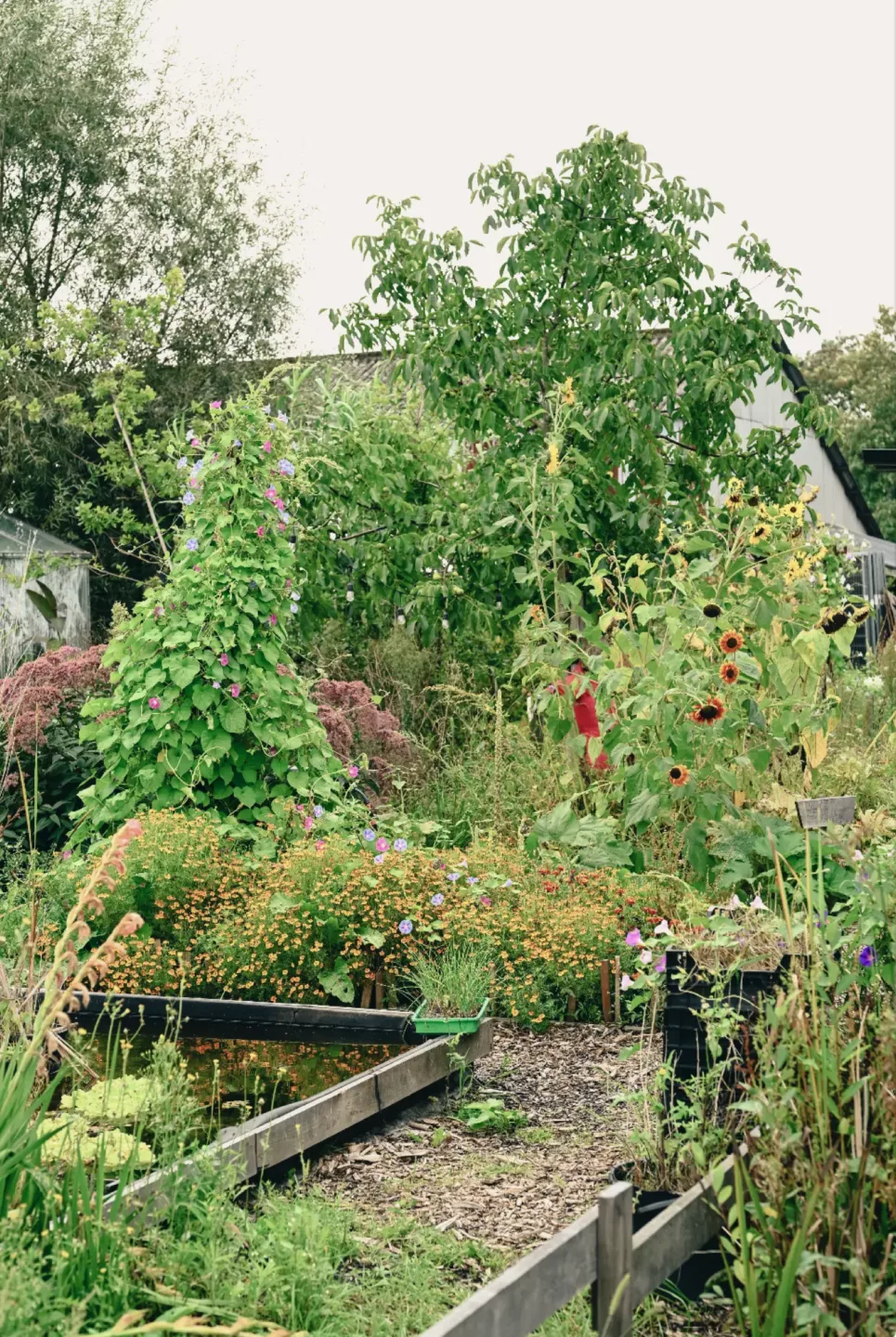
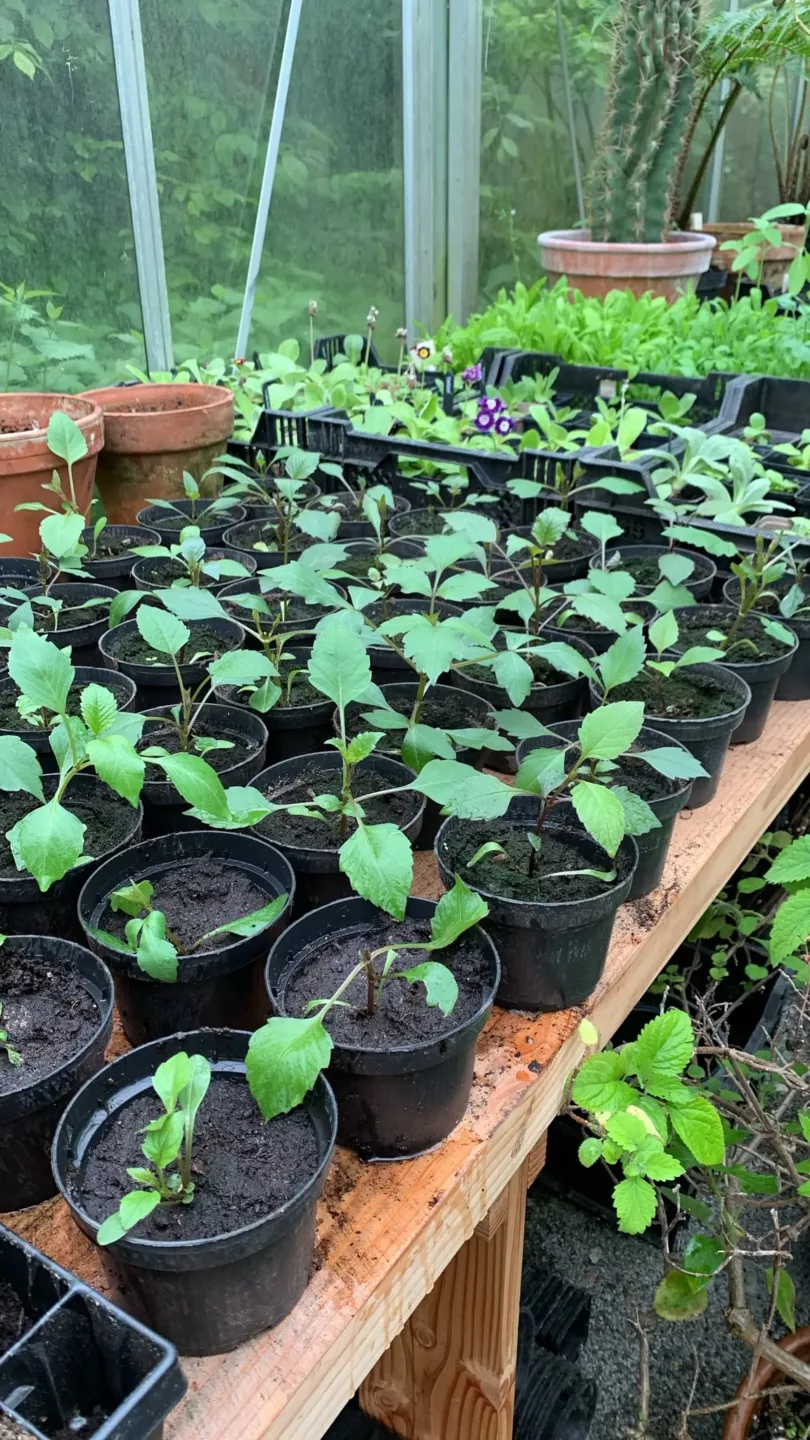
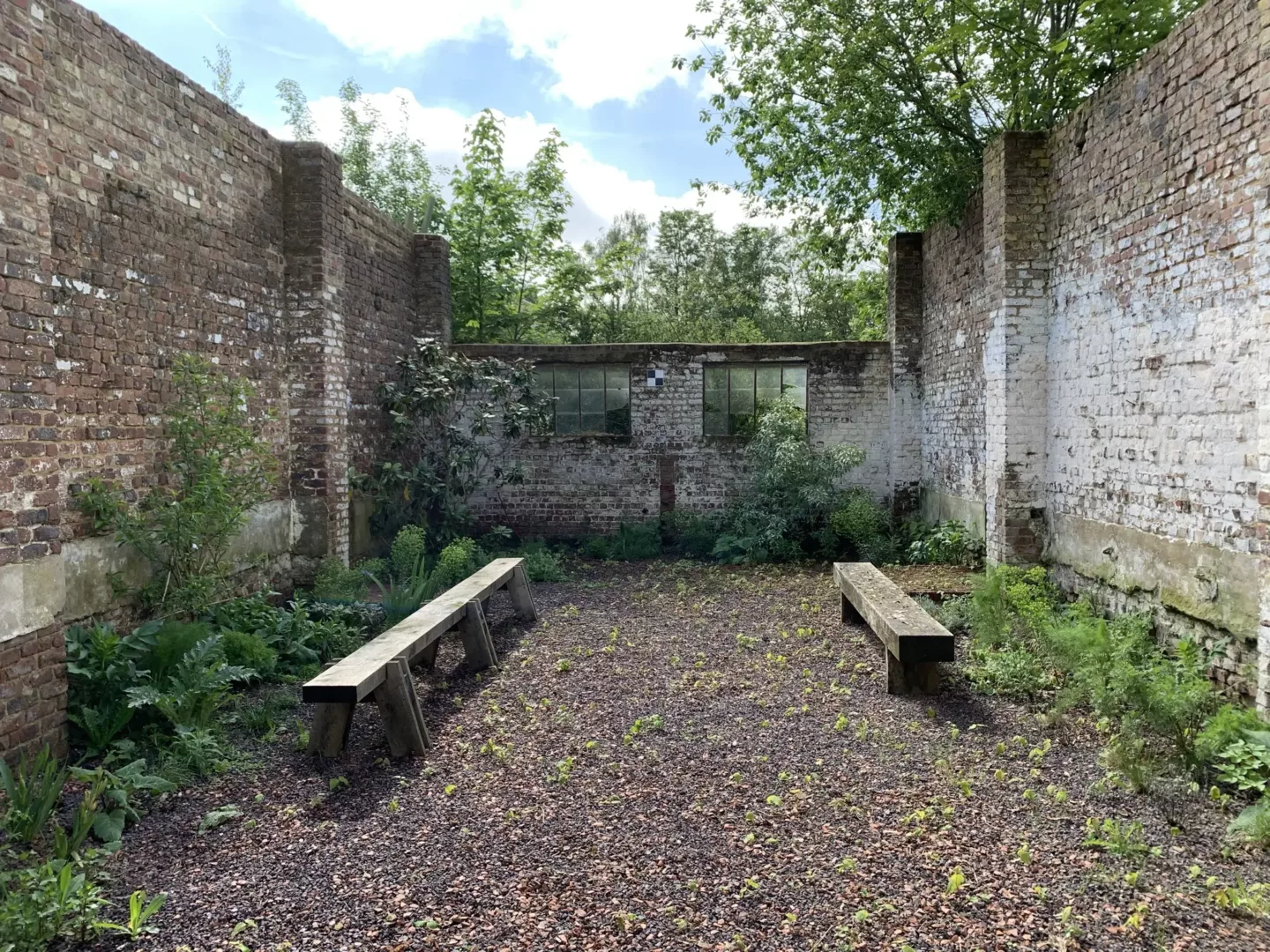
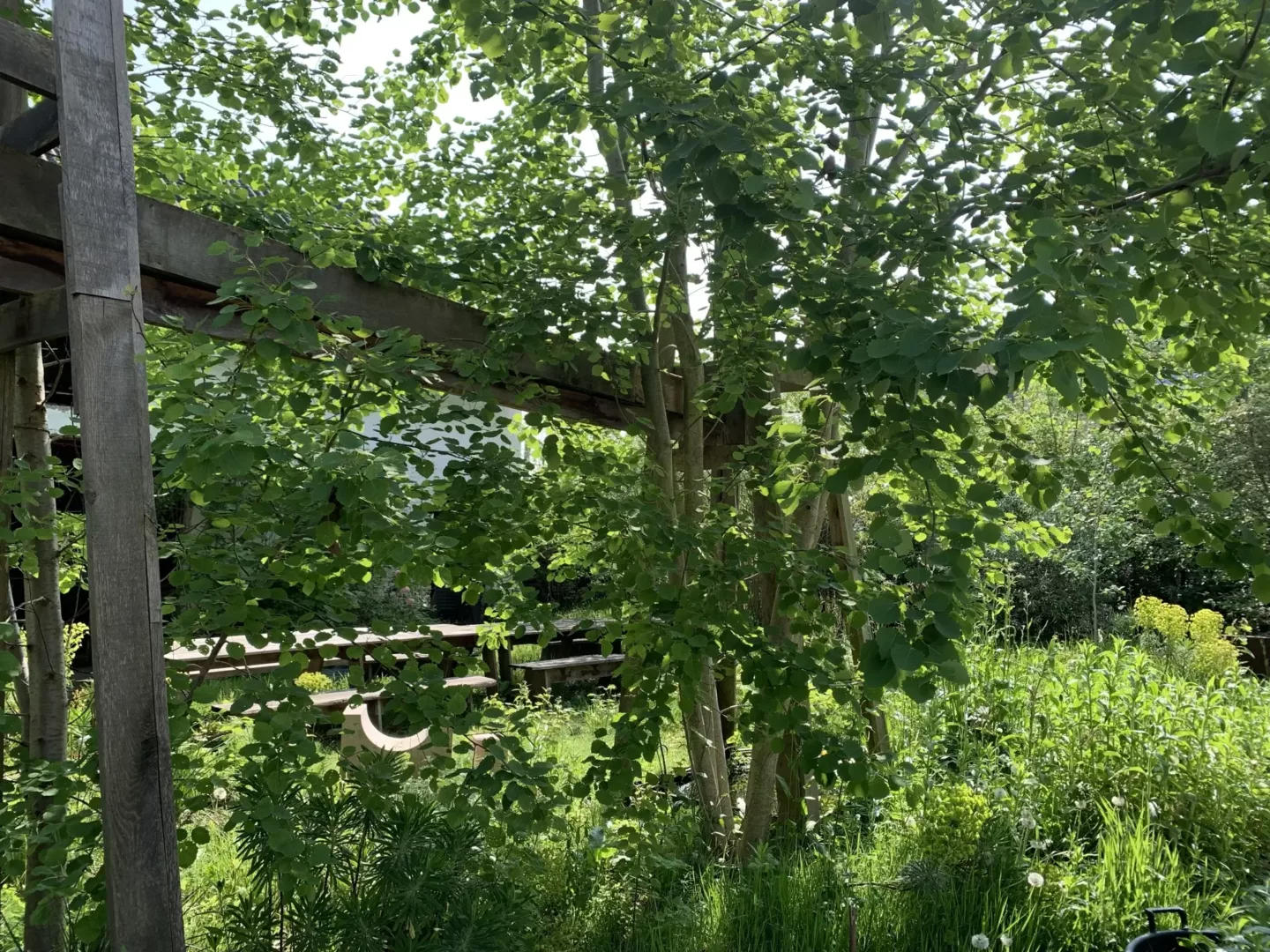
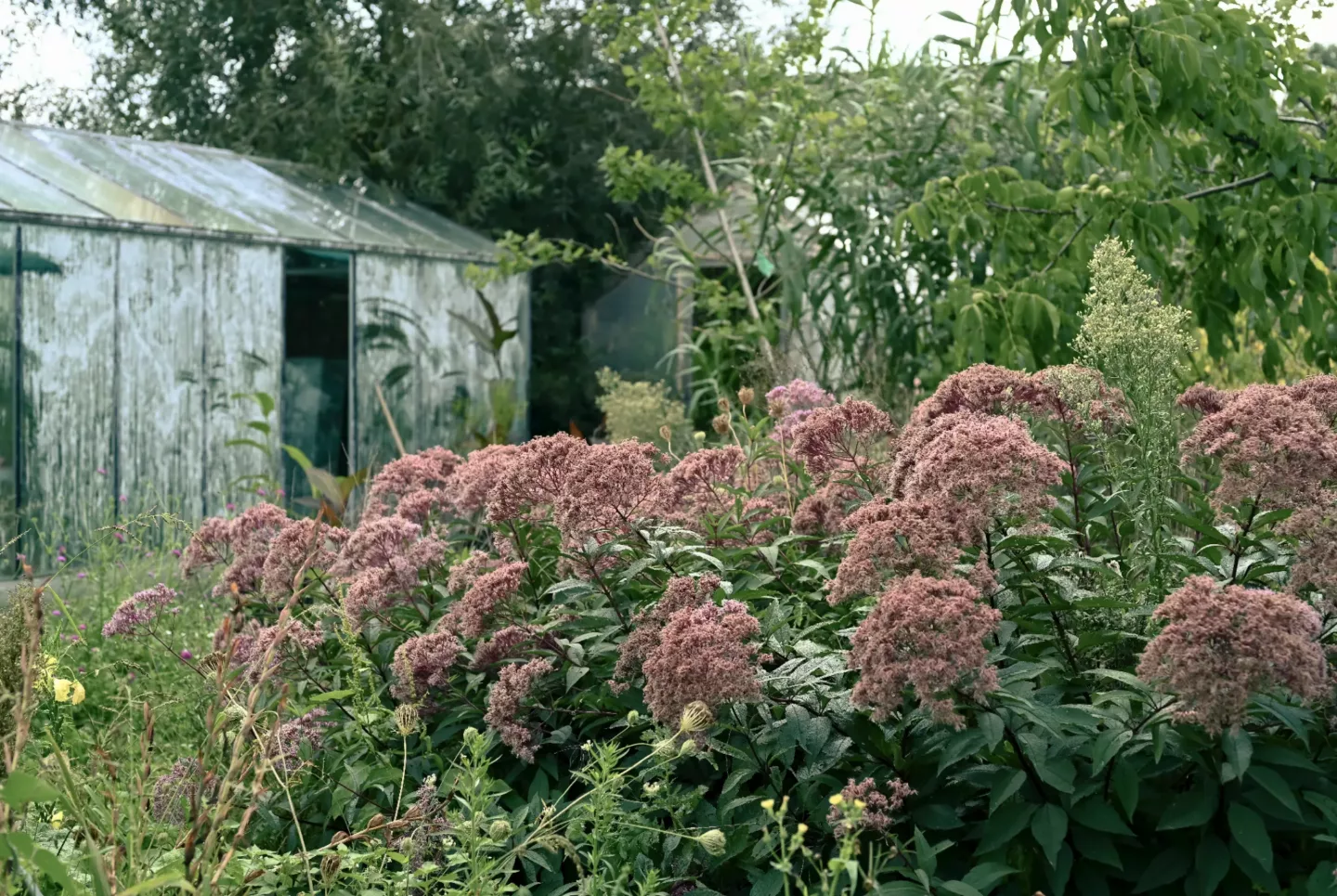
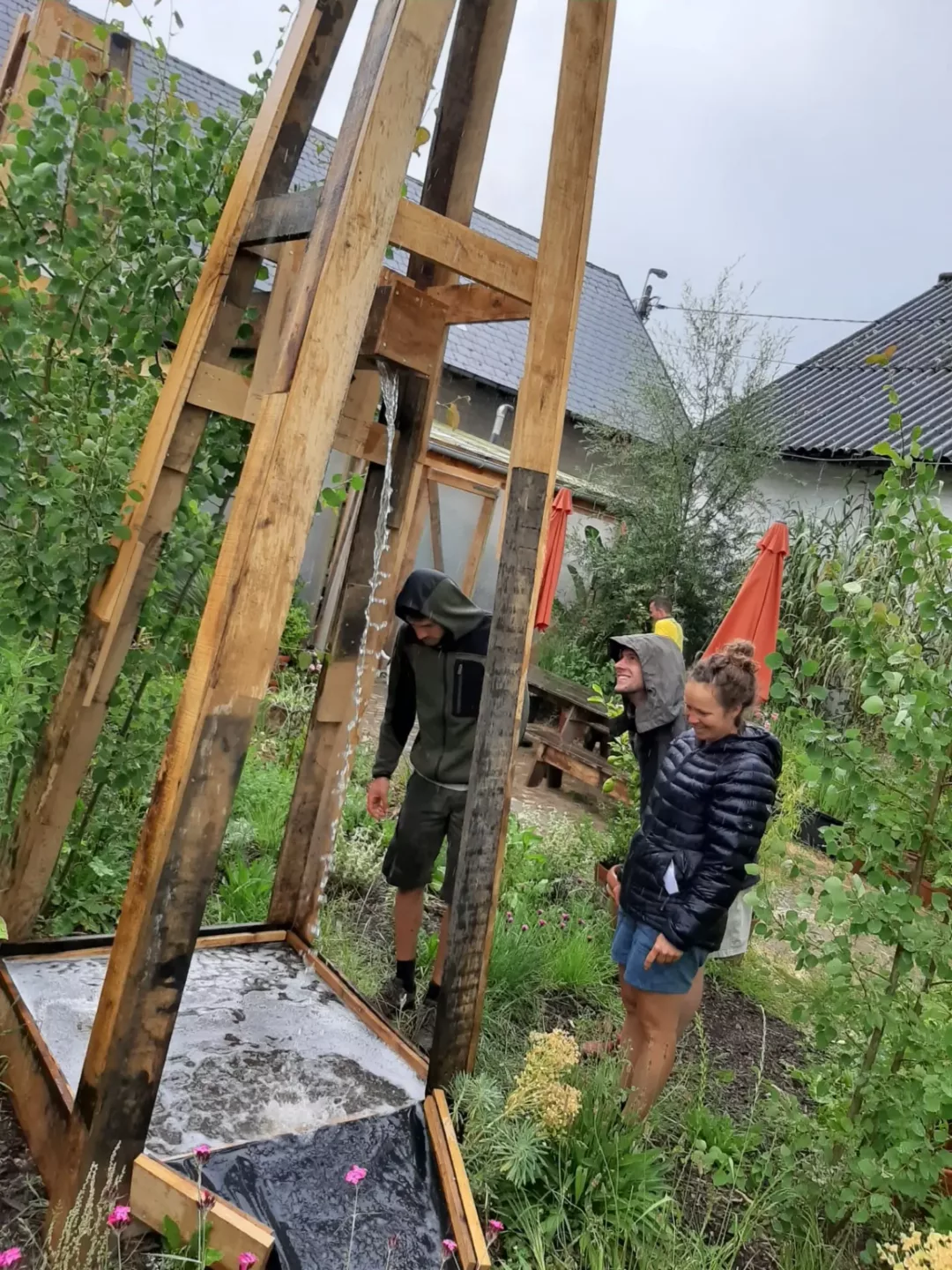
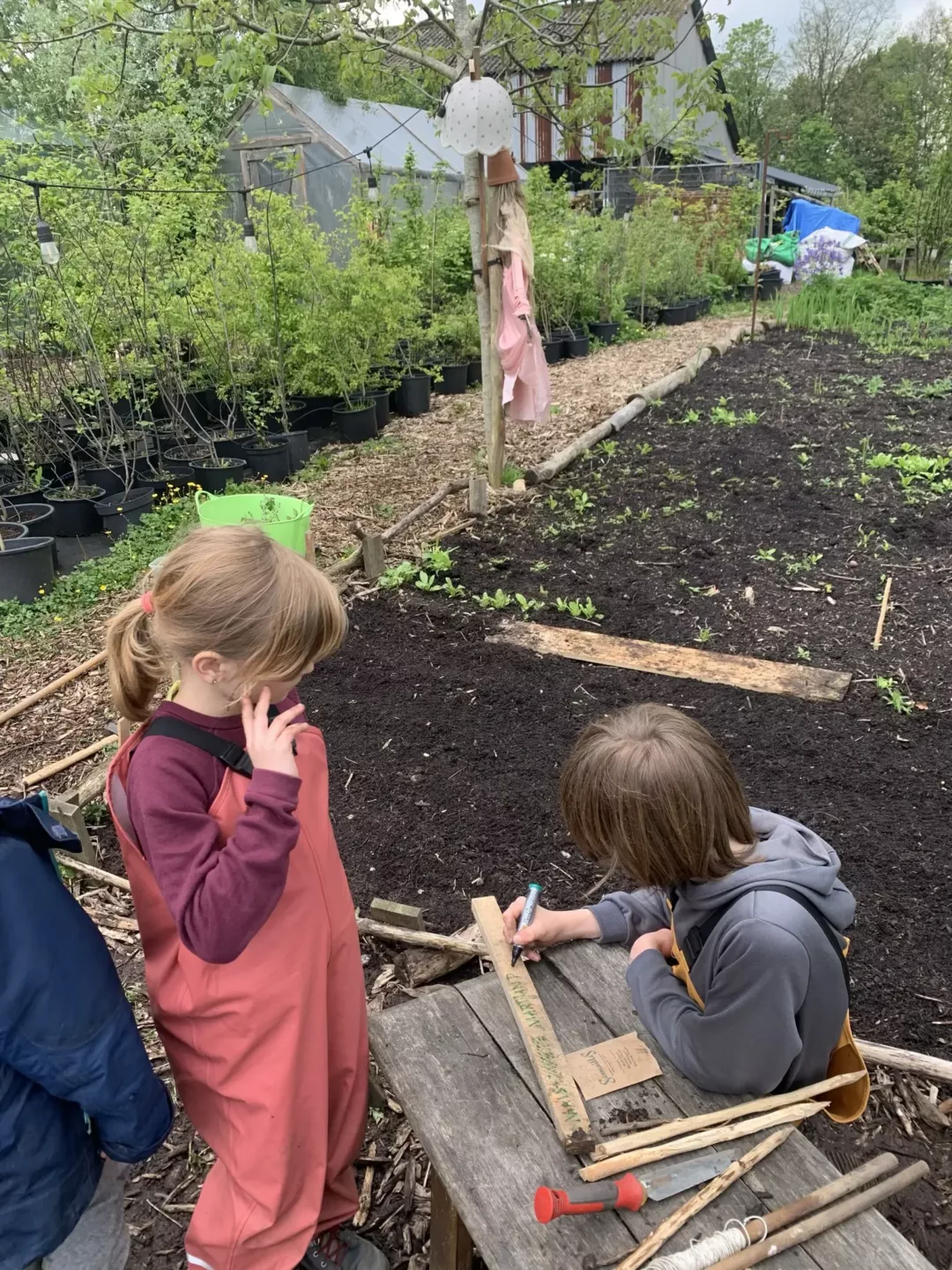

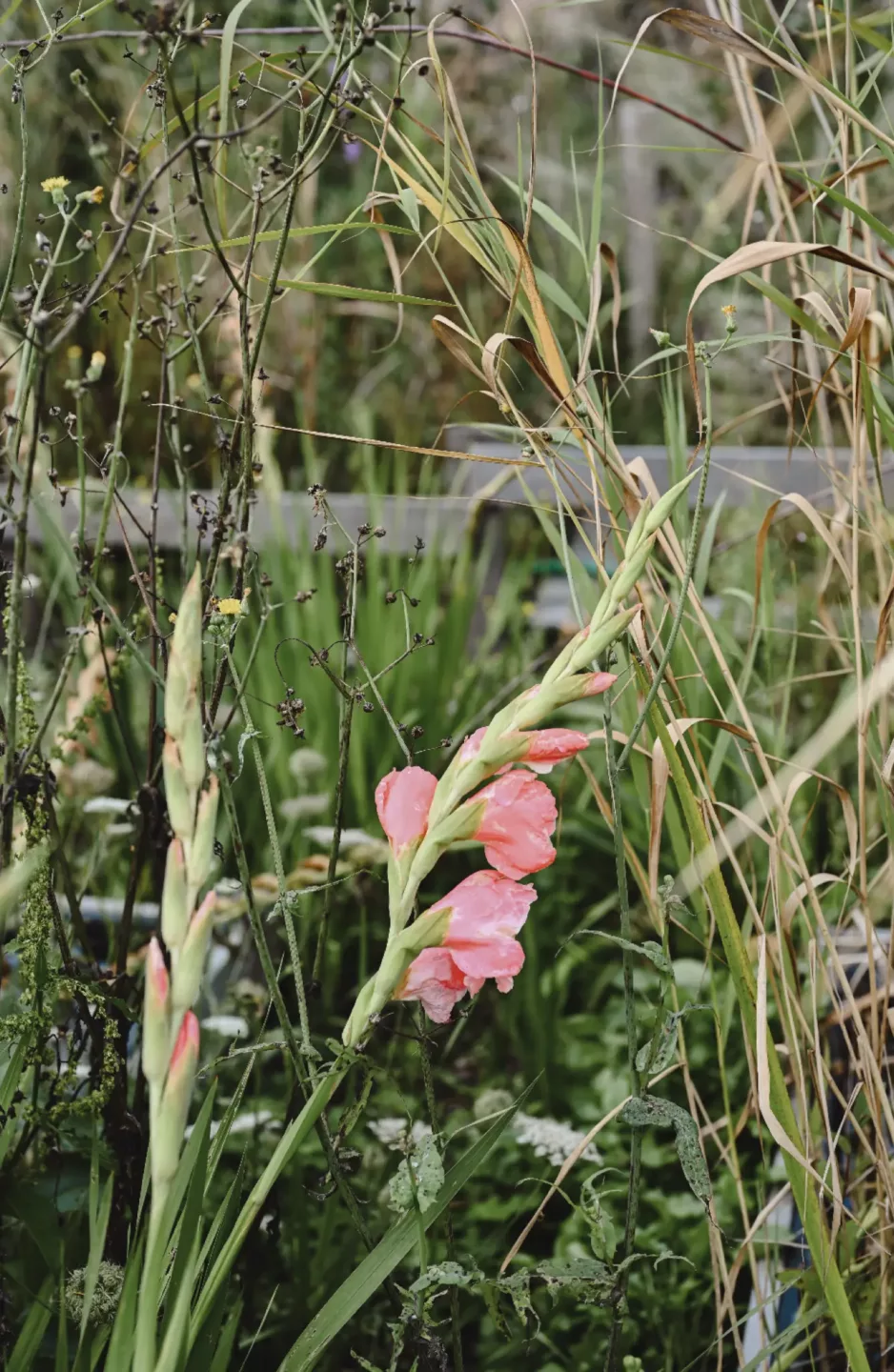
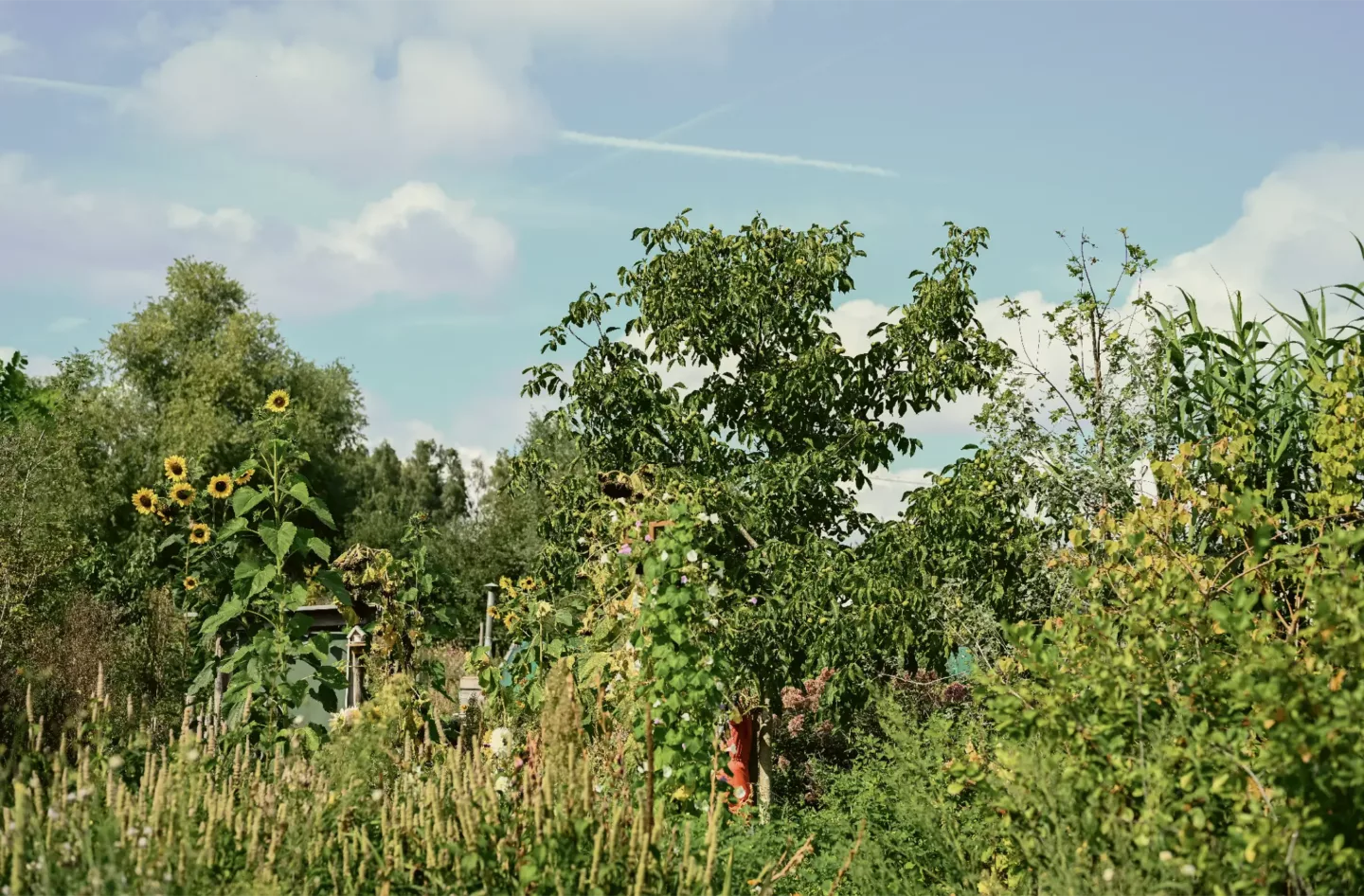
Hengstenberg
The historic farmstead on the Hengstenberg in Overijse forms the beating heart of Plant en Houtgoed. This versatile site functions as a living laboratory and research platform, composed of a mosaic of test and experimental zones. Within this dynamic whole, workshops, offices, greenhouses, production spaces, open landscapes, and more intimate areas are shared and used as spaces for knowledge exchange and interdisciplinary collaboration.
Thanks to its varied abiotic conditions, the site offers optimal growth opportunities for a wide spectrum of biotopes and vegetation typologies. These include thermophilic pioneer communities, mobile ecosystems, woodland edge vegetation, productive biotopes, grasslands, and aquatic and semi-aquatic habitats. This ecological diversity forms the basis for a continuous process of observation, experimentation, and adaptation.
The site functions as an experimental framework for the principle of design by maintenance, in which design is not seen as an endpoint but as a process that unfolds over time through management and ecological monitoring. In this approach, the focus of design shifts from the initial planning phase to the management phase. Vegetation is not merely planted but actively guided and shaped through maintenance interventions tailored to its developmental stage, ecological function, and spatial context.
Each vegetation type or biotope on the site is managed according to a custom strategy, built from a matrix of interventions, monitoring practices, and guiding mechanisms. These are evaluated not only for their local effectiveness but also for their transferability to other contexts. In this way, Hengstenberg serves as a testing ground for applying nature-based design principles in diverse spatial and ecological settings.
By not only allowing natural processes but placing them at the core of the design and management trajectory, the site becomes a demonstration of how ecological dynamics can serve as a formative principle within a landscape architectural practice.
Hengstenberg: een levende proeftuin voor ontwerpgestuurd beheer
De historische hoeve op de Hengstenberg in Overijse vormt het kloppende hart van Plant en Houtgoed. Deze veelzijdige site fungeert als een levend laboratorium en onderzoeksplatform, opgebouwd uit een mozaïek van test- en experimenteerzones. Binnen dit dynamische geheel worden werkplaatsen, kantoren, serres, productieruimtes, open landschappen en meer intieme plekken gedeeld en benut als ruimtes voor kennisuitwisseling en interdisciplinaire samenwerking.
Dankzij de gevarieerde abiotische condities biedt de site optimale groeimogelijkheden voor een rijk spectrum aan biotopen en vegetatietypologieën. Deze omvatten onder andere thermofiele pioniergemeenschappen, mobiele ecosystemen, mantelzoomvegetaties, productieve biotopen, graslanden, ruigtezones en aquatische en semi-aquatische habitats. Deze ecologische diversiteit vormt de basis voor een continu proces van observatie, experiment en adaptatie.
De site functioneert als een experimenteel kader voor het principe design by maintenance, waarbij het ontwerp niet als een eindstadium wordt beschouwd, maar als een proces dat zich doorheen de tijd ontvouwt via beheer en ecologische opvolging. Hierbij verschuift het zwaartepunt van het ontwerp van de initiële planningsfase naar de beheerfase. Vegetaties worden niet louter aangeplant, maar actief begeleid en gevormd via beheeringrepen die afgestemd zijn op hun ontwikkelingsstadium, ecologische functie en ruimtelijke positie.
Elke vegetatietype of biotoop op de site wordt behandeld volgens een op maat gemaakte beheerstrategie, opgebouwd uit een matrix van ingrepen, monitoringpraktijken en sturingsmechanismen. Deze worden niet alleen op hun lokale effectiviteit geëvalueerd, maar ook getest op hun overdraagbaarheid naar andere contexten. Zo fungeert Hengstenberg als een toetssteen voor het toepassen van natuurgedreven ontwerpprincipes in diverse ruimtelijke en ecologische settings.
Door natuurlijke processen niet alleen toe te laten maar ze centraal te stellen in het ontwerp- en beheertraject, wordt de site een demonstratie van hoe ecologische dynamiek kan fungeren als vormgevend principe binnen een landschapsarchitecturale praktijk.